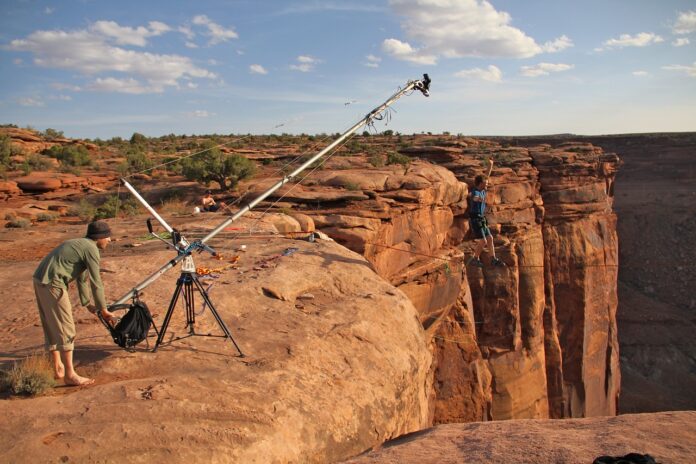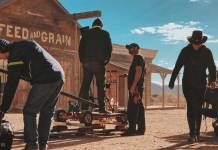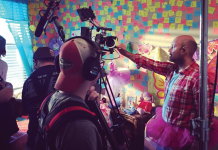In a nutshell
- Risk-taking in filmmaking is vital to the art form, and directors who embrace it through surrealism are taking it to new levels.
- From non-linear storytelling to the most unexpected settings and characters, there are tricks to doing it effectively.
- When a film truly delivers on the risks it takes, loyal fans and cult classic films are born — often, they are films that many love to hate.
In a world driven by predictability and anticipated outcomes, filmmakers have a passport to innovation and creativity on a broad spectrum. Surrealist filmmakers, known for pushing the boundaries of conventional storytelling, serve as trailblazers and risk-takers in a creative exploration. Risk-taking in filmmaking is an art, though. When it’s done well, epic adventures and cult classics are born.
Here, we’ll dissect “Asteroid City” (2023), an unusual film that took big creative risks and made new waves in the surrealist genre. We’ll show you what works well and areas to proceed with a little more caution so that your own creative risks in filmmaking will pay off.
Why risk-taking in filmmaking is important
Filmmaking, at its core, is an art form. And like any art, it thrives on innovation. Risks in filmmaking are not just calculated gambles. They are a means to break free from the shackles of conformity and breathe life into your visions. Taking risks challenges the status quo and can lead to groundbreaking results that captivate audiences.
Creative risk-taking in film — or any industry — is also a method for cultivating a growth mindset. Having This type of mindset will drive your business because you’ll develop a habit of continuously taking on bigger and braver risks. It will also help you conquer any fear of failure as you learn to see it as a vital aspect of growth.
Explore surrealism by embracing the unknown
Surrealist filmmakers have long been celebrated for their audacious approach to storytelling. Wes Anderson has been directing interesting films that have mixed reviews since the early 1990s. His recent work on “Asteroid City” was no exception. Regardless of critic opinions, this film provides a wide array of creative risk-taking that we can learn from.
Nonlinear Narrative
Surrealist filmmakers are masters of playing with time, seamlessly jumping in and out of timelines and leaving the concept of time undefined. In “Asteroid City,” the narrative is told as a story within a story. It’s also told by a narrator to an audience within the film, to which we are all an audience.
The main plot is presented fairly linearly. However, the story cleverly leaves out pieces of the timeline, creating a bit of disorientation and a need to constantly “catch up” to the current scene. Somehow, the story seems to move along both quickly and slowly.
Embrace some of these approaches in your own work to create a sense of intrigue. The benefit of a film that causes the viewers to feel slightly confused is that it urges them to truly pay attention and watch it repeatedly for pieces they missed.
Unconventional visuals
In surrealism, sets can be simultaneously sparse and incredibly detailed. This juxtaposition of the ordinary and the extraordinary invites viewers into a world where the boundaries of reality and fantasy blur. Anderson masters this concept in “Asteroid City.” Allowing cameras to pan out he shows an isolated tourist-trap town. It consists of just a few buildings in the middle of a vast desert. A single dusty road passes through. The entire movie has the strange feel of a low-budget film being produced on a theater stage. And yet the curiosities and details tucked into each space and scene still effectively transport the audience.
On more technical levels, Anderson makes a lot of unusual choices in the creative process, too. For example, it was shot on 35 mm film. Some scenes were shot in 1:37:1 aspect ratio while others were shot in 2:39:1. The television narration scenes are filmed in black and white. On-set scenes were shot in anamorphic color under the harsh daylight of the desert. Additionally, there are backstage scenes filmed in standard color.
Then, as if to remind the audience that we have no idea what’s going to happen next or why we should care, a genuine claymation character is introduced. For just a few brief moments, this character steals the show.
Explore your ability to bend and manipulate visuals to challenge viewers’ perceptions. You can also work with colors, film styles, lighting and spatial awareness in many ways to get creative. Sometimes the real risk-taking in filmmaking is about what you choose to not use and the rules you decide to break along the way.
Frame-by-frame
One of the profound subtleties of “Asteroid City” is the constant intentional framing. Some are obvious, such as the mid-century black and white television set as a frame for the narrator. Pay attention, though, and you’ll notice an endless parade of narrative and visual frames:
- A car and mechanic inside of a garage door
- A tiny town in the middle of a desert in a bowl of mountains
- A story within a story as told by a story
- A woman leaning on a window sill
- A photographer’s view through a camera lens
- A small group of visitors seated inside the crater of an asteroid
- A film within a play within a television production
The framing decisions you make in your projects can set the tone for expectations. Those decisions can also set the tone that throws expectations out the window. Consider ways to take the rule of thirds to the extreme or use it intentionally incorrectly. The important thing, as Anderson shows, is that these decisions must be made under the guidelines of artistic styling.
Complex characters
In surrealism, characters can be underdeveloped or viewed through a distorted lens. These tactics add layers of mystery to the narrative. We find characters in “Asteroid City” that are larger than life with elaborate backgrounds and careers. And yet, somehow, they each seem fairly ordinary at the same time. They exist in unbelievable circumstances and yet many of them are bystanders to their own story as it unfolds.
At one point in the film, one of the characters becomes annoyed with the limits of his role within the confines of the play. We see him walk out of the set through a door. He crosses into the backstage area where he confronts the director. This moment reminds the audience that multiple lenses are being used to tell the story. It also reminds us of the complexity of the actors who are playing stage actors portraying characters.
Character portrayal is a great area to get creative. You can leave a lot of room for interpretation. Although one of the earmarks of surrealism is a level of despondency or passiveness, you should still sharpen the personas. You might make them super relatable or completely repulsive. Try telling the story with more or less development. Alternatively, try painting the protagonist through the eyes of the antagonist or a great foil. When you find the right angle, you’ll have intriguing characters that challenge conventional storytelling norms.
Find the right balance for your audience
While taking creative risks in filmmaking is essential for innovation, you must make some risk-assessment decisions. The goal is to find a balance that prevents alienating (spoiler alert?) your true audience. Surrealist filmmakers, while pushing boundaries, understand the delicate art of engaging viewers.
On one hand, it’s vital to have a deep understanding of your target audience. Who are they? What are their expectations? What resonates with them? By getting in touch with your audience’s preferences and tastes, you can tailor your risks. Find ways to align with what they hope to get out of your film. Then, surprise them as much as possible.
On the other hand, by their very design intended to leave audiences bewildered and with more questions than answers, surrealism is generally polarizing. When a director embraces the fact that half of the people who see a film will hate it, it can be liberating. It becomes a challenge to push those limits to the brink. How much will they hate it? Will they dislike it enough to create intrigue that actually expands the audience?
Embrace the spirit of risk-taking in filmmaking
Importantly, as you take creative risks, seek feedback from test audiences or peers. Their perspectives can provide valuable insights into what works and what may need adjustment. Additionally, be open to making adjustments that enhance the audience’s experience without compromising your creative vision.
By embracing surrealism and integrating its daring techniques into your own projects, you can practice risk-taking in filmmaking. The unexpected visuals and intentionally confusing storytelling delight many fans of the genre — and dismay many anti-fans.
Understanding this chaotic reputation is true power for creative filmmakers who love to push the envelope. It’s what leads to the cult classic status and hyper-loyal fanbases that endure through time.








